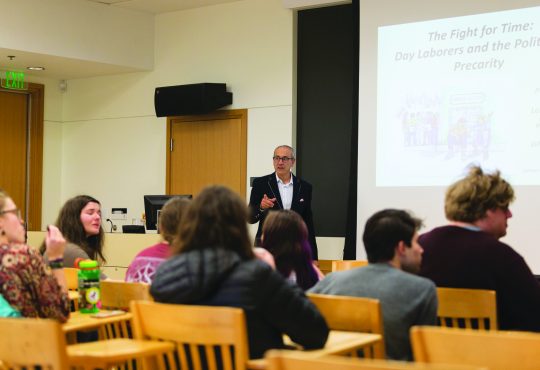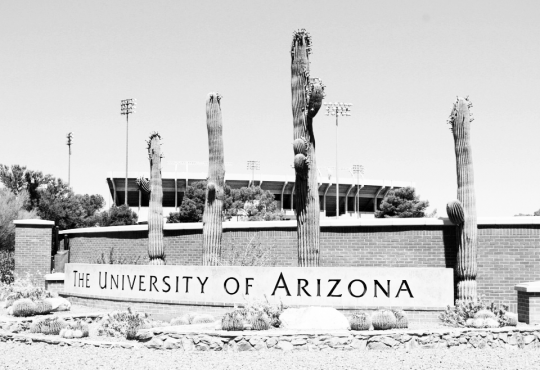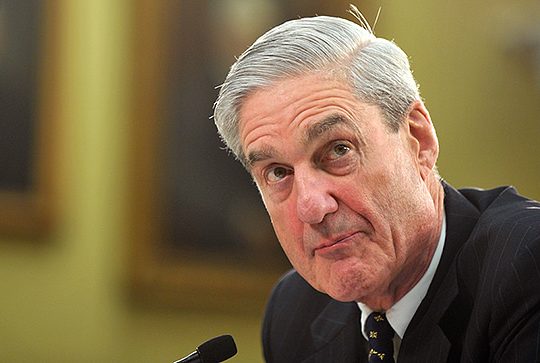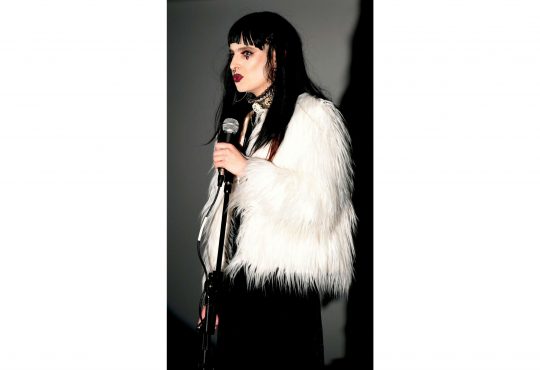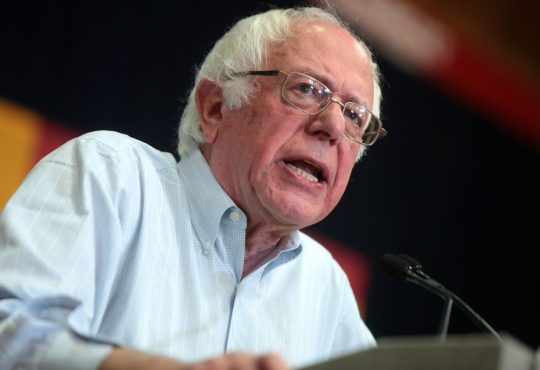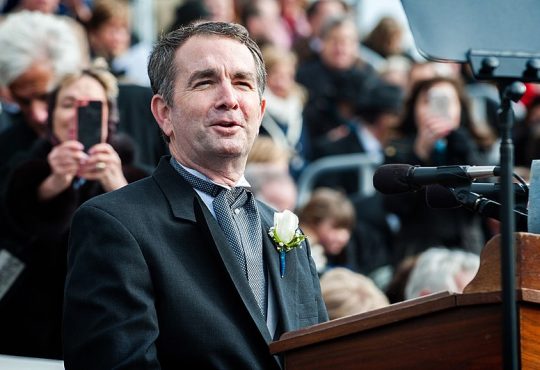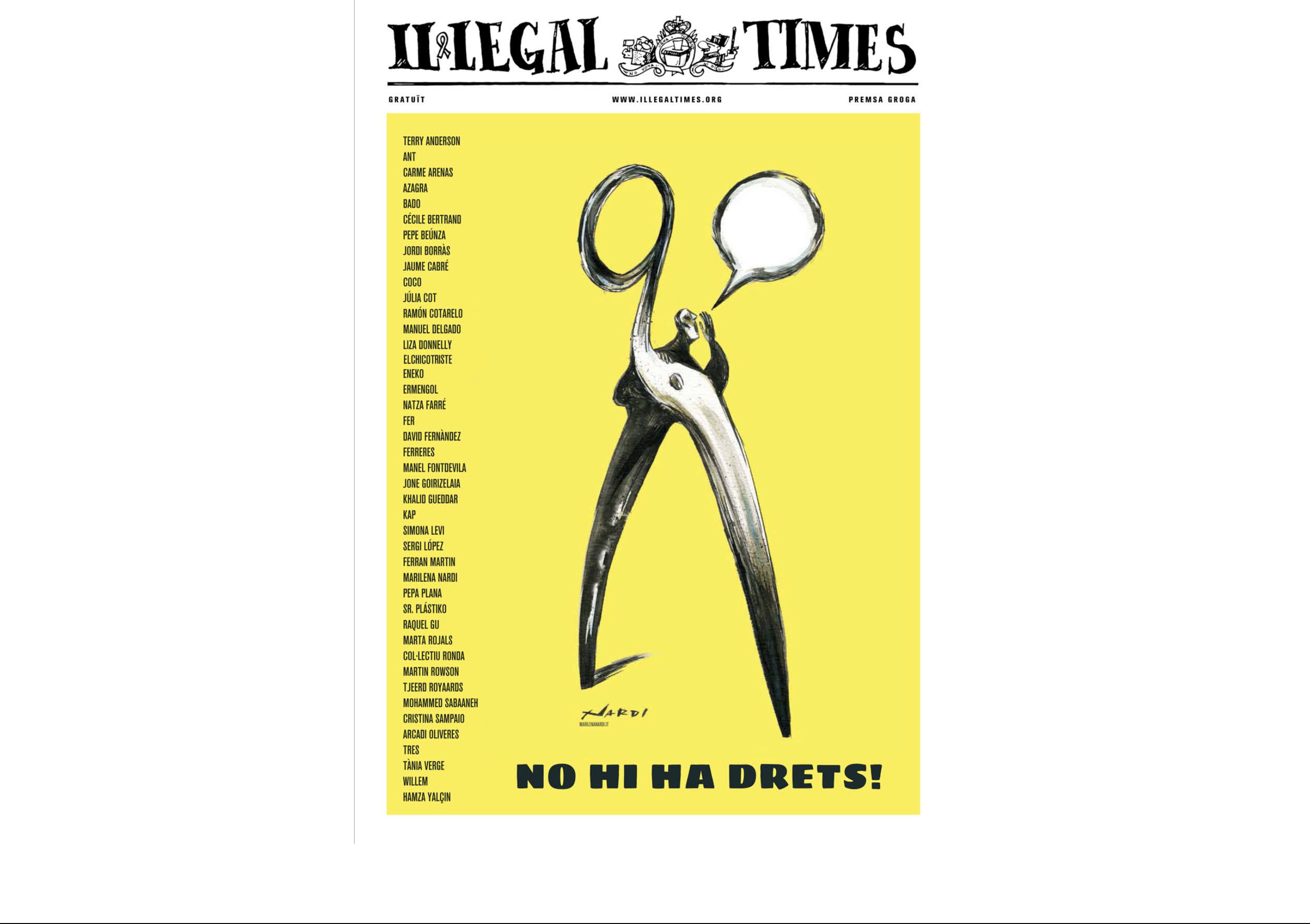
Mohammad Sabaaneh once spent five months in an Israeli prison — now he dreams of peace for his country. Sabaaneh’s politically charged and sometimes dangerous cartoons show us the harsh reality of everyday life for Palestinians under Israeli control.
Mohammad Sabaaneh lives in Ramallah, Palestine, where he is the lead political cartoonist for Al-Hayat al-Jadida, the Palestinian Authority’s daily newspaper. His work has been featured in solo and group exhibitions in Palestine and across the globe. He has won numerous awards and has participated in cartoon workshops for children exposed to violence. His first book, “White and Black,” depicts the harrowing experiences of Palestinians under Israeli authority.
Sabaaneh offered the Palestinian perspective about the decades-old conflict between Israel and Palestine on Saturday evening’s talk at King’s Books in downtown Tacoma. The talk, “Picture This! Life & Art in Palestine,” was hosted by the Tacoma chapter of Jewish Voice for Peace, a group supporting Jewish and Palestinian collaboration and friendship.
Sabaaneh’s comics show a grim reality for the Palestinians. The stark drawings from “White and Black” detail everyday life in Palestine.
Many show Palestinian families with downcast eyes trying to pass border checkpoints surrounded by barbed wire and gun-wielding Israeli soldiers. Others depict Palestinian prisoners huddled in small, dark cells. For Sabaaneh, these images aren’t only political, they are reality.
Sabaaneh, who originally studied interior design, became inspired to draw political comics after experiencing the notoriously violent “Second Intifada,” a Palestinian uprising against Israel in the early 2000s.
“I heard from the news that the Israeli soldier killed my colleague Zacharia. That’s why I decided as a Palestinian cartoonist to start doing my cartoon and resist by my art,” Sabaaneh said.
This resistance did not come without cost; he was jailed by Israel for five months in 2013, two weeks of which were spent in solitary confinement. Sabaaneh described the experience of living alone in a small, windowless jail cell as something akin to torture. In order to stay sane, Sabaaneh turned to his art.
“I decided I’m not here as a Palestinian prisoner, I’m here as a journalist and I will start think as a journalist inside this prison. I’m here to report for the people around the world what’s going on inside this prison,” he said.
Sabaaneh drew numerous unfinished sketches while in prison, leaving out any indication that the works were political until he was released for fear of further persecution. Sabaaneh’s ultimate goal for these drawings was to humanize the Palestinians.
“I decided that I will start talk about the Palestinian prisoner, about the Palestinian people, from the human perspective, not as we used to talk about them as a hero and as superman. We need as a human being, from the people around the world to stand with us as a human being,” he said.
Sabaaneh desires to humanize Palestinians on both a global and local scale. Some of his comics depict the West Bank wall that separates the Palestinians and Israelis as a great dividing force. The enormous concrete wall, built by Israel after the Second Intifada, is considered a defense mechanism by Israel and racial segregation by Palestine.
“It is not just for border or for security reasons; this wall surrounds everything: our relations, our education, our religions,” Sabaaneh said. “I don’t think the next generation from Israel or from Palestinian people will recognize each other. We will recognize the Israeli just as a soldier. We will not recognize them as a human being, and they will not recognize us also.”
Sabaaneh, who has been accused of anti-Semitism and inciting violence, insists that his wish is for his people to live in peace.
“My dream as a Palestinian state, as a Palestinian citizen, is to live in peace in my land. I don’t care if it’s one-state solution, two-state solution, no-state solution; no one cares. All the Palestinian people now want to live in peace in their land. … I’m asking as a human being to live in peace in my homeland and that’s it.”
Sabaaneh’s work deals with an extremely volatile and globally controversial situation. His drawings and imprisonment prove that art can be used as a means of resistance. Despite their controversial nature, Sabaaneh’s comics humanize and legitimize the struggles of the Palestinian people.

